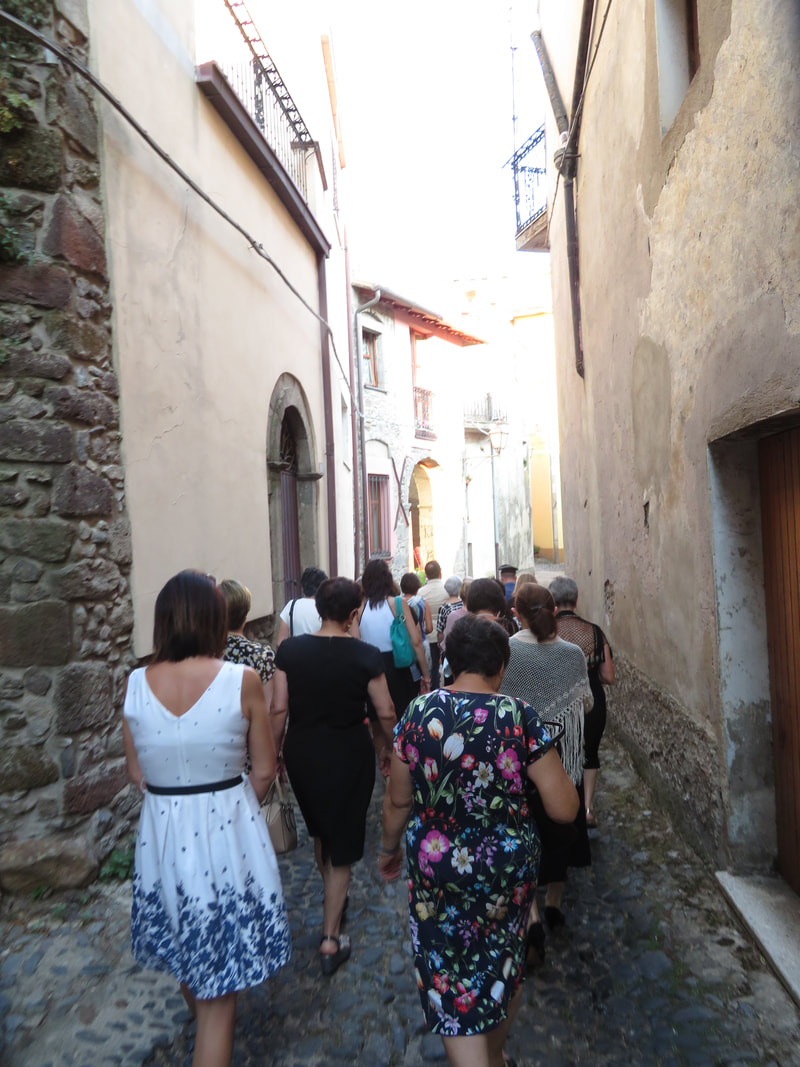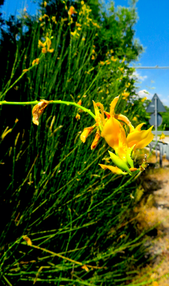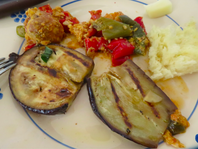Over the last ten days in the village of Santu Lussurgiu (Sardigna), horse-related activities have ramped up. Teenage boys, men and children as young as four and five are seen, riding horses through the narrowest of village streets, to the grocery store, to the bar, and back home again. At least twice a day, a group of 2-3 young men on tall, muscular horses (Anglo-Arab-Sardinian, to be exact) pass right below my balcony on via Nuoro. I’ve always been told that the village deeply loves their horses, but I’ve never seen or felt it in quite this way. Yesterday, I found out why.
At 6:55 last night, I was asked by the owners of the local market where I shop if I was going to “l’Ardia.” Not knowing what that was, I said I didn’t know, and they told me, “go over there, to Piazza San Pietro. If you leave now, you can still catch it in time.” So I did, and at 7 pm I arrived at Piazza San Pietro to find a crowd of people crunched in the corner of the piazza, and laurel branches placed around the perimeter of the entire piazza.
A loud firecracker sounds to signal the festivities, and the next thing I know, a stampede of twenty five horses come racing through the piazza, within feet of the crowd. The horses are ornately decorated, each with a gold star on its chest, and riders are dressed up, too. Social status through dress is also clearly delineated, and the three men at the front of the line (the “Priors” of the procession) are each wearing suits with their riding breeches. The air is now filled with the scent of laurel leaves and smoke.
They line up, in a single file line against the wall of myrtle branches and adjacent to the church of San Pietro. Since this is part of the village festival known as “Festa del Sacre Cuore” (Festival of the Sacred Heart) and part of the annual liturgical calendar, the Catholic priest blesses the men, throwing holy water on the horses from a dropper as he walks by each of them, says a prayer for everyone, and another firecracker is lit as the horses roll their eyes and become antsy. Then, just like that, they take off running, coming through the narrow piazza three more times before returning home to their stables on the perimeter of the village.
An hour later, I hear an accordion playing, loudly and fully, from somewhere in the village. I walk downstairs to explore where it’s coming from, and the sound stops. It starts again, but this time it’s in earnest, playing multi-metered Sardinian dances, one faster than the next. Each time I enter a piazza, it gets louder, and each time I enter a narrow street, it becomes quieter. I’m confused, and can’t seem to source the sound. Then, I look up at the white Jesus statue at the rim of the volcano, which sits at the complete top of the village. There, far away, I spot a small speck: it’s the accordion player, leaning against the statue, with the entire acoustic bowl of the village to amplify the sound of the instrument. Surrounding him, I see swaying bodies, and realize that a dance, and possibly a “festa,” are taking place up there, replete with “balli sardi” (Sardinian traditional dances). I fall asleep to the vibrant sound of accordion music, streaming through my wooden window shutters.
The next day is the final procession, signaling the end of the Festa. We walk, mostly women, singing and reciting parts of the liturgy in Latin (“Christo, abbia pietá di me”), with a statue of Christ carried on a stretcher at the front, from the Piazza di San Pietro, and circle the entire village, returning an hour later to the same Piazza, where the saint is returned to its resting place by the altar until next year’s renewal ceremony. More firecrackers are lit in the center of the piazza, and everyone heads home to prepare their dinner, attend to children and family, or take their evening walk around the village.

























 RSS Feed
RSS Feed
